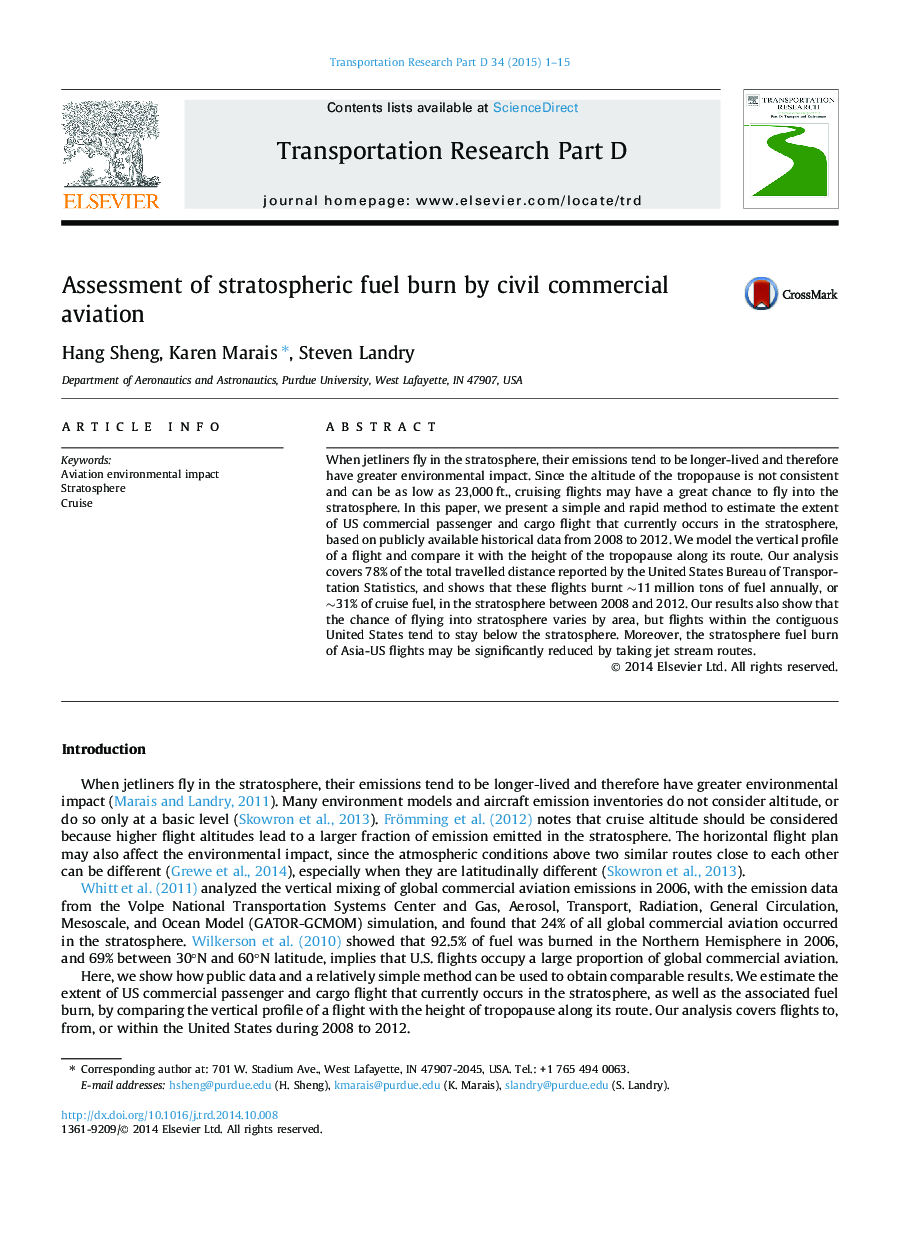| Article ID | Journal | Published Year | Pages | File Type |
|---|---|---|---|---|
| 7500625 | Transportation Research Part D: Transport and Environment | 2015 | 15 Pages |
Abstract
When jetliners fly in the stratosphere, their emissions tend to be longer-lived and therefore have greater environmental impact. Since the altitude of the tropopause is not consistent and can be as low as 23,000Â ft., cruising flights may have a great chance to fly into the stratosphere. In this paper, we present a simple and rapid method to estimate the extent of US commercial passenger and cargo flight that currently occurs in the stratosphere, based on publicly available historical data from 2008 to 2012. We model the vertical profile of a flight and compare it with the height of the tropopause along its route. Our analysis covers 78% of the total travelled distance reported by the United States Bureau of Transportation Statistics, and shows that these flights burnt â¼11Â million tons of fuel annually, or â¼31% of cruise fuel, in the stratosphere between 2008 and 2012. Our results also show that the chance of flying into stratosphere varies by area, but flights within the contiguous United States tend to stay below the stratosphere. Moreover, the stratosphere fuel burn of Asia-US flights may be significantly reduced by taking jet stream routes.
Keywords
Related Topics
Life Sciences
Environmental Science
Environmental Science (General)
Authors
Hang Sheng, Karen Marais, Steven Landry,
